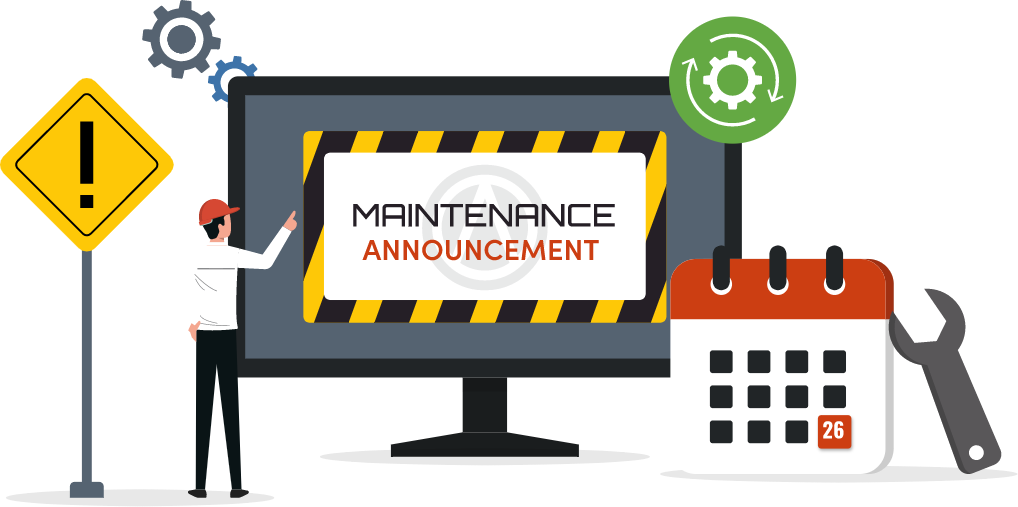What role does data play in menu design decisions?
Data helps identify best-selling items, track profitability, and guide pricing strategies. Using POS reports and food cost data ensures your design choices are based on real performance, not guesswork.
How to Create a Menu Design That Works for Multiple Locations
The Balancing Act of Multi-Location Menu Design
For restaurant owners with more than one location, keeping menus consistent can be tricky. Your menu isn't just a list of food - it's how customers see your brand. Every font, color, and layout choice sends a message about your restaurant's personality and quality. When menus look and feel the same across all locations, customers know what to expect and trust your brand more.
At the same time, no two locations are exactly alike. Different neighborhoods have different tastes, food costs, and popular dishes. A good menu design should allow each restaurant to adjust slightly without losing its overall look and structure.
The goal is to find the right balance between consistency and flexibility. You want one clear brand identity that ties every restaurant together, but you also need room for local favorites and seasonal items.
Define Your Brand Identity and Menu Core

Before you think about colors, fonts, or layout, you need to be clear about what your brand stands for. Your brand identity is what makes your restaurant recognizable, no matter where it's located. It's in the tone of your menu descriptions, the type of dishes you serve, and even the way you price your items. When guests visit one of your locations, they should instantly feel that it's part of the same brand family - even if the menu has a few local touches.
Start by defining your menu core - the items that represent your restaurant's identity. These are the dishes customers associate with your brand, the ones they expect to see every time they visit. Keep these items consistent across all locations, including their recipes, names, and menu placement. This consistency builds trust and ensures that guests get the same quality experience everywhere.
Next, create a simple menu design guide that outlines your brand standards. Include details such as logo placement, font styles, color palette, photo usage, and section order. This helps every location follow the same design rules and prevents the menu from drifting off-brand over time.
Finally, make sure your tone of voice stays consistent. Whether your menu uses short, fun descriptions or a more straightforward style, that tone should match your brand personality in every store. A clear and consistent brand identity makes your menu easier to manage - fand helps customers recognize and connect with your restaurant instantly.
Understand Local Market Variations
Even with a clear brand identity, your menu design needs to fit the realities of each location. What works in one restaurant may not perform the same way elsewhere. Each market has different customer habits, ingredient costs, and regional tastes. To make your menu work everywhere, you need to study these differences and plan accordingly.
Here are the key points to focus on
1. Study Customer Preferences - Use sales data, guest feedback, and team insights to learn what people in each area prefer. Some markets might lean toward spicy foods or family-style meals, while others may want lighter, healthier dishes. Let data - not assumptions - guide your design and item placement.
2. Account for Local Pricing and Costs - Ingredient prices and availability change from region to region. Adjust your menu prices where needed, but keep the same layout and overall look. This keeps the brand consistent while protecting your profits.
3. Add Local or Seasonal Options - Leave space in your menu for limited-time or location-specific items. A small "local favorites" section keeps the menu fresh and allows flexibility without losing brand consistency.
Understanding your local markets helps you make smart menu choices that reflect real customer needs and operating costs. The goal is to give each location room to succeed - while keeping your design, structure, and brand voice unified across all restaurants.
Establish a Standardized Menu Framework
Once you understand your brand and local needs, the next step is to create a standardized menu framework. This framework acts as the foundation for every menu across your locations - it ensures that your design, structure, and layout stay consistent, even when local variations are added.
Here are the key points to focus on
1. Create a Consistent Layout and Structure - Start by defining how every menu should look. Decide the order of sections (appetizers, entrees, beverages, etc.), how items are grouped, and where featured dishes appear. A consistent structure helps guests quickly recognize your brand and makes staff training easier.
2. Use Standardized Design Templates - Develop a digital menu template that all locations can use. Include your logo, color palette, fonts, spacing, and pricing format. This prevents off-brand designs and saves time when updates are needed. Digital templates also make it easier to control quality and roll out changes across multiple restaurants.
3. Keep Item Names and Descriptions Uniform - Every signature item should use the same name and description across all locations. This builds familiarity and prevents confusion for returning guests who may visit different branches.
4. Include Allergen and Nutritional Labels - Standardized labeling builds trust and ensures compliance with regulations. Keep formatting identical so guests can easily find important information anywhere.
A strong, standardized framework creates visual consistency and operational efficiency. It helps your restaurants feel connected under one brand - while still leaving room for local flexibility.
Allow Strategic Flexibility for Local Additions

Even with a strong framework in place, every location needs a bit of flexibility. A one-size-fits-all menu might look neat on paper, but in practice, it can limit local success. Each restaurant operates in a unique market, with its own customer preferences, supplier availability, and seasonal trends. Allowing a small amount of flexibility keeps your menu relevant and helps each location connect better with its guests.
Here are the key points to focus on
1. Define Clear Boundaries for Customization - Set rules for how much of the menu can change locally - often 10-15% is enough. For example, you might allow one or two local specials per section or seasonal items that rotate quarterly. This keeps creativity alive without losing structure.
2. Support Local Ingredients and Trends - Encourage managers to use local ingredients or highlight regional favorites when it fits your brand. This can help reduce food costs, improve freshness, and appeal to community tastes.
3. Keep the Design Consistent - Even if a location adds local dishes, the layout, fonts, and descriptions should follow the main template. This maintains a unified look across all menus and reinforces brand recognition.
4. Review and Approve Changes Regularly - Have a simple approval process to check new menu additions for quality and consistency. Regular reviews help prevent drift from your brand standards.
By allowing structured flexibility, you create menus that feel both familiar and fresh - keeping your brand strong while giving each restaurant the freedom to adapt and succeed.
Use Data to Guide Design and Pricing Decisions
Designing a menu for multiple locations shouldn't rely on guesswork - data should lead every major decision. Using real performance numbers helps you choose what to highlight, where to place items, and how to price them effectively. When you rely on facts instead of opinions, you make better choices that drive profit and consistency across your restaurants.
Here are the key points to focus on
1. Analyze Sales and Profit Data - Look at item-level data from your POS system to find your best sellers and high-margin dishes. Identify which items perform well across all locations and which ones vary by market. Use this insight to guide which dishes deserve prime placement or special highlights on the menu.
2. Study Guest Behavior - Review how customers read and interact with your menu - both physical and digital versions. Eye-tracking studies and heat maps show that diners' attention naturally flows in certain patterns. Place profitable or signature items in those "hot zones" to increase visibility and sales.
3. Review Food Costs and Contribution Margins - Don't just look at popularity - track the actual profitability of each dish. Use cost and margin data to remove low-performing items or adjust prices where necessary.
4. Test and Measure Menu Changes - Treat every new layout or design update like an experiment. Roll out small changes in select locations and compare results before applying them system-wide.
Using data in this way keeps your menu decisions objective, your pricing accurate, and your design focused on what truly drives profit and guest satisfaction.
Simplify Menu Updates and Rollouts Across Locations
Once your menu design and pricing are set, the next challenge is keeping everything up to date. With multiple locations, even small inconsistencies - like outdated prices or missing items - can confuse customers and hurt your brand image. The goal is to create a simple, reliable process for updating and rolling out menu changes so every location stays aligned and accurate.
Here are the key points to focus on
1. Centralize Menu Management - Keep one master version of your menu design, preferably stored in a shared system or cloud platform. This prevents each location from editing their own version and ensures updates are always made from the same source.
2. Use Digital Templates or Menu Software - Design your menu using editable templates or menu management software that allows changes to be made once and applied everywhere. Digital systems also make it easy to update prices, add seasonal items, and remove old dishes without manual redesign.
3. Set a Clear Update Schedule - Establish a routine for reviewing and refreshing menus - monthly, quarterly, or seasonally. Regular updates keep content accurate and give you a chance to review performance data before making changes.
4. Train Teams on the Rollout Process - Make sure managers and staff know how to check for updates, print new menus, or apply digital changes. Simple checklists can prevent errors and ensure a smooth transition.
By simplifying updates and rollouts, you reduce errors, save time, and keep every location consistent. A clean, up-to-date menu shows professionalism and strengthens your guests' trust in your brand.
Flexibility Drives Growth
When your restaurant brand expands into multiple locations, your menu becomes one of your most powerful tools for creating a unified experience. A consistent design helps guests instantly recognize your brand, no matter where they dine. At the same time, a flexible structure allows each restaurant to adjust for local tastes, ingredient availability, and pricing realities.
The most successful multi-location menus combine both - consistency that builds trust and flexibility that drives long-term growth. Standardized layouts, clear menu frameworks, and controlled local variations all help your team maintain order while giving room for creativity. By using data to guide updates and streamlining rollout processes, you ensure that every customer, in every restaurant, enjoys the same reliable experience your brand promises.
Your menu isn't static - it should grow alongside your business. As you gather data and feedback from each location, continue refining your design to make it simpler, clearer, and more profitable over time.
Simplify Menu Management with Altametrics
Managing menus across multiple locations doesn't have to be complicated. With Altametrics you can centralize updates, track sales performance, and control brand consistency from one platform. Whether it's adjusting pricing, rolling out new items, or analyzing location-specific trends, Altametrics gives you the tools to make smart, data-driven decisions that strengthen your restaurant operations.
Lean about Altametrics today to see how smarter technology can simplify your menu management - by clicking "Schedule a Demo" below.














